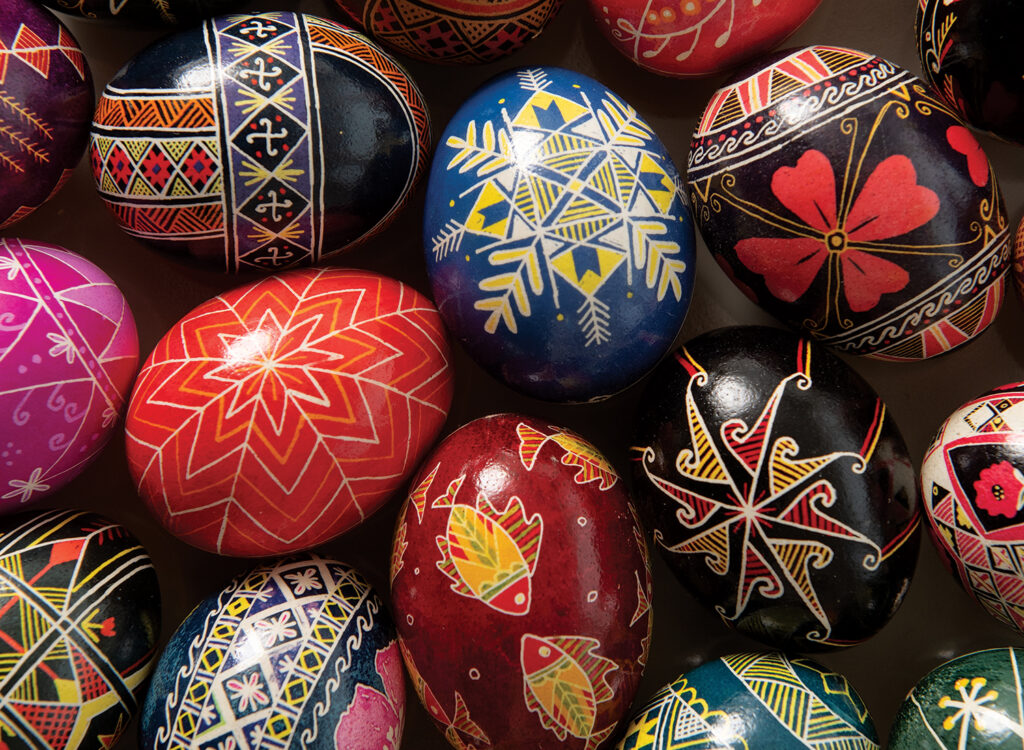Make a Wish
The business community and cultural leaders tell us what’s on their list for the next big cultural thing in des moines – and how we will accomplish it.

MEGAN VERHELST May 29, 2015 | 11:00 am
15 min read time
3,687 wordsArts and Culture, Business Record InsiderLooking around Greater Des Moines, one might think we have it all when it comes to arts and culture.
The list of attractions, events and venues that have come to fruition in the past few years is long. A new arts incubator is slated to move into the old Qwest building at 900 Keosauqua Way. Food trucks are finally here. The Principal Riverwalk was completed in 2013. Last spring, the Des Moines Social Club moved into its $3.5 million home. Des Moines will host the long-coveted NCAA men’s basketball tournament in 2016. Newly renovated Cowles Commons is on the cusp of opening in time for this year’s Winefest Des Moines, which kicks off May 30. The list goes on and on.
Still, we Greater Des Moines residents are never quite satisfied — and that’s good, because it means we’re always looking for the next big thing to push what we offer to another and better level.
But what is that next big thing we might see on the horizon for Greater Des Moines? What attractions, cultural activities, venues or events does Greater Des Moines need?
While that question might not have a definite answer, we think it’s OK to have a wish list — a few ideas tucked away that, if we had our way, would be the next big or little thing for Central Iowa.
At first, we asked Business Record readers what was on their cultural wish lists. We received more than 80 responses from residents and business leaders, each providing a host of ideas ranging from more festivals to an aquarium to a Ferris wheel on the downtown riverfront. See some of their ideas on Page 13.
In addition, I also met with five cultural leaders in Des Moines: including Sally Dix, executive director at Bravo Greater Des Moines; Greg Edwards, CEO of the Greater Des Moines Convention and Visitors Bureau and Des Moines Area Sports Commission; Jeff Fleming, director of the Des Moines Art Center; Zachary Mannheimer, executive director of the Des Moines Social Club; and Mary Sellers, president of United Way of Central Iowa. Each represent different areas of Des Moines culture, and all are engaged community leaders and cultural consumers.
I posed the same question to them: What’s on your cultural wish list?
While most had an idea for a venue here or an attraction there, their responses focused more on what exists and better leveraging that to reach a variety of goals — goals that include spreading the word outside of Des Moines to let others know who we are and what we have, focusing on collaboration so we can work more efficiently to accomplish goals, and directing our efforts on the little things that will draw young people to Des Moines.
The takeaways from my conversations with these cultural leaders were many, but a handful of concrete themes floated to the surface.
We’ve come a long way
One would be hard-pressed to find a cultural leader in Des Moines who disagrees with the fact our city has come a long way in the past 15 years. Arts and culture opportunities abound, and most are quick to point that out, including Mary Sellers, president of United Way of Central Iowa, who moved to Des Moines in 1999.
“I was recruited here from Orlando, and when I flew in on a Sunday, the only place you could eat was the hotel restaurant,” Sellers said. “Des Moines is an immensely different place than it was in 1999.”
Greg Edwards, CEO of the Greater Des Moines Convention and Visitors Bureau and Des Moines Area Sports Commissions, agreed.
“You can go back to the year 2000 — that’s when downtown was on the verge of growing,” Edwards said. “But there was no Iowa Events Center, no Science Center of Iowa, no (Pappajohn) Sculpture Park, no Des Moines Social Club, no Temple for Performing Arts. That time marked the beginning stages of people really starting to get a vision.”
Beyond buildings and attractions, great strides have been made showing how vital a strong arts and culture scene is to the region’s economy, said Zack Mannheimer, executive director of the Des Moines Social Club. Mannheimer, who’s been a Des Moines resident for eight years, said that wasn’t always the case.
“A really amazing marriage has transpired between the corporate and artistic worlds, where both finally understand one cannot exist without the other,” he said. “And I think the greater community has embraced this concept — that both worlds must coexist in order to maintain what we have and build for the future.”
So what’s in store for the future of Des Moines arts and culture? What needs to be done when we’ve already made such great strides?
Mannheimer said it’s time to focus on the “unsexy” things, and it’s OK to take those ideas from other cities — cities that have executed the ideas well — and apply them to Des Moines.
“We have all this great stuff; now we have to put people on it,” he said. “And sometimes that means borrowing from other cities, learning about challenges they faced and how they overcame those challenges.”
Focus on the little things
For Mannheimer, the next big thing won’t be found in a new venue or attraction, though if he had his wish, he’d add a 1,500-seat venue to the Des Moines music scene.
Still, for Mannheimer, the next big thing on his wish list is infrastructure — or 500 little things, ranging from ideas as small as installing benches downtown to as big as bringing Amtrak from Chicago to Des Moines.
“We’re making baby steps toward becoming a million-person metro,” he said. “We’re a city of great wealth, and we’ve used it well, but we can still leverage it in different ways.”
When looking at ways to leverage Des Moines’ success, Mannheimer suggested looking to other cities larger than us but still similar enough to be within reach — Minneapolis, Oklahoma City, Denver and Portland, to name a few.
But growth also comes from attracting new residents, and new residents are drawn not only to attractions, but to those 500 little amenities Mannheimer mentioned earlier.
“More basketball hoops, benches downtown, citywide Wi-Fi — these are all little things, none of which cost a lot of money, though if you add it all up, it might add up to be a $30 million to $40 million investment,” he said. “But it can be done in pieces … and all these pieces are things young people care about. The ‘build it and they will come’ model is true, but there are two sides to that model. We’ve done the sexy part. Now, the little things are equally important.”
Public art
Is public art one of those 500 little things? Maybe. Is it important to making Greater Des Moines a beautiful, interesting place to live and visit? Absolutely.
Jeff Fleming, director of the Des Moines Art Center, said Des Moines already has made great progress integrating art into the fabric of our city. His wish is to continue doing that because not only does public art add an educational and visual component to the city, it also drives economic growth.
“It creates a gathering point or point of energy in the city,” Fleming said, mentioning the soon-to-be open Cowles Commons. He also used the public art near the Hub Spot and City Hall as examples. “Public art can activate spaces, like the Sculpture Park activated Western Gateway.”
Public art can also be worked into almost any space because of to its loose definition. Public art can be a light, a sound, a landscape design, Fleming said.
But where specifically would Des Moines benefit from more public art?
“The Principal Riverwalk is a prime example,” Fleming said. “It’s begging for more art.”
Edwards with the Des Moines Convention and Visitors Bureau agrees. He referred to ART RTE, an idea for Des Moines still in its infancy. ART RTE, created by the Downtown Neighborhood Association, is currently raising funds for the venture, described on its website as a way to connect public art in Des Moines with an access path via artful city sidewalks and intersections.
“This is really picking up steam,” Edwards said. “Not only is it great for culture, but it encourages healthy living and wellness.”
Also, though perception is subjective, Fleming notes, it’s important that any additional public art be “of the highest quality.” It’s a factor he feels Des Moines already makes a priority.
Mannheimer built on the idea of art, adding one of his biggest wishes moving forward is giving artists a chance “to go back in their basements and create more art.”
“We need to take a break from building buildings — not forever, but now we need to focus on the art itself,” he said. “There’s no way to determine whether art is quality art, but artists must ask themselves that question and discuss it with their friends. We have an established arts scene here, but nowhere outside of Des Moines. And to make that happen, something has to break nationally — and that something has to be unique and homegrown.”
How do we make that happen? How do we create something of such high quality it puts Des Moines on the map? Artists need to challenge themselves and each other, Mannheimer said.
“Artists, against their will, have done a good job putting on a different outfit and playing the game (to establish an art scene here),” he added. “That took time away from doing what they’re good at, which is art. Now they need to rely on organizations like (the Social Club) and let us deal with the administrative side so they can go back to making innovative and interesting things. That’s the only way we’re going to have a national, cultural movement.”
Develop the downtown riverfront
While both Fleming and Edwards felt the Riverwalk was a great place to see the emergence of more public art, many also thought the Riverwalk was one place where numerous cultural opportunities should both expand and flourish.
“The riverfront is one of the biggies for me,” Edwards said. “That has developed so beautifully with the trail systems. So what’s the next step with that? Is it some type of attraction? A zip line across the river?”
Edwards said he’s heard a lot of talk among leadership groups in Des Moines in regards to bringing a water trail system to our rivers. Utilizing the water more — offering boat rentals, guided tours on the river and other recreational opportunities — would also enhance tourism in downtown Des Moines, he added.
Developing the riverfront and adding more amenities to the Riverwalk was one of the most mentioned cultural attractions on the public wish lists submitted by Business Record readers. According to those surveys, Greater Des Moines residents crave more restaurants and open-air patios, music nightlife on the Riverwalk, and opening the Des Moines River to more recreation including kayaking and boating.
Citing the San Antonio River Walk as a great example to emulate, Edwards said he’d also like to see more nightlife on the Des Moines riverfront.
“I think the whole community agrees that when you have a strong, vibrant downtown, it filters out. It rises all ships, and I believe we have such a gem (in the riverfront),” Edwards said. “Rivers are a gem to any city, and we have such a great infrastructure started there.”
Market who we are, but establish what we are first
Ask Greater Des Moines residents how far we’ve come, and they likely will tell you.
Ask someone who lives outside Des Moines? You might receive a different response.
While we’ve made those strides, too often no one sees it or knows about it but us, and many of those who weighed in with their cultural wish lists said it’s time to do something to push Des Moines outside the lines and into the periphery of others across the country.
“We have these great things,” Fleming said. “Now we need to shout it out.”
The Convention and Visitors Bureau took a step last year in spreading the word outside of Des Moines with the creation of Catch Des Moines Culture, a marketing campaign specifically promoting the arts and culture in our community.
According to numbers provided by the CVB, the Greater Des Moines area saw approximately 2.9 million visitors last year. The CVB also conducted a visitors survey of an estimated 5,000 people. Of those who responded, 25 percent said they visited the area because of arts and culture. The Catch Des Moines Culture website also has seen more than 55,000 unique visitors since its launch in March 2014.
Fleming said the campaign was a great first step, and to him it appears to be yielding the desired results.
“It’s becoming a more concerted effort, and the CVB is doing a splendid job,” Fleming said. “Yet we need to create something to be known for outside of Des Moines. Now is the time to figure that out.”
But what should we be known for? Do we need to create something new, or is it something that already exists?
Sellers, president of United Way of Central Iowa, said whatever it is, it needs to celebrate the uniqueness of Des Moines.
“Des Moines is unique, and anyone who has lived anywhere else aside from here knows this,” Sellers said. “But we’re not audacious like that, and we don’t put ourselves out there. But we need that something that celebrates the uniqueness of our community and grows to be so special people flock here.”
Sellers noted Austin, Texas, and how the city is known for its annual music festival, South by Southwest. The event is something by which others define the city.
The Downtown Farmers’ Market, Sellers said, could be that unique event that showcases who we are and what Des Moines is all about. The farmers market encapsulates the spirit of Iowa, a coming together of neighbors that can be traced back to Iowa’s agricultural roots.
“The communities that have figured out that one thing are those who remain true to self,” she said. “I think of Miami and Art Basel. They own it, and it’s something that truly aligns with the spirit of their city.”
Work toward a common goal
Establishing that cultural identity is of utmost importance, but how do we determine what our cultural identity should be?
The community has demonstrated an appetite for culture and a willingness to support it, according to Dix, executive director at Bravo Greater Des Moines. So what we need now is a plan, she added, is a collective strategy that defines how we move forward and accomplish either of those goals.
“We’ve done amazing things, and each one was thoughtful, but mostly it was all individual projects. Now we need to be more thoughtful in how we work together,” she said. “There will always be more ideas than dollars. While different organizations have different needs, collectively they all need an audience and donors, and that’s where a collective vision with a strategy comes into play. … And unless we come together as a community and identify the most important next steps, we might start fragmenting and competing with one another on what that next step is.”
Why be thoughtful? Dix used Nashville as an example.
“They said they wanted to be known as the Music City — everyone agreed on it,” she said. “Then they lined up public policy, transportation, housing and venues to support that. But there was a clearly defined end goal that made sure everyone was pointed in that direction and to ensure resources were being thoughtfully leveraged.”
Dix cited the already existing Capital Crossroads in Des Moines as a great start and a place where these conversations do exist. That initiative, composed of 10 different areas of focus, including culture, aims to ensure the region capitalizes on its strengths and provides a road map to opportunities.
But if Dix had her wish, she’d like to see more of an emphasis placed on determining Des Moines’ cultural branding, something similar to the Cultivation Corridor branding strategy rolled out in 2014. She also used as an example a new plan implemented in Denver called Imagine 2020. That initiative is described on its website as “Denver’s first cultural plan since 1989, designed to place a renewed sense of direction in the promotion of arts and culture, as well as elevate the city as an international culture destination.”
“I don’t think most people think of Des Moines as a cultural destination,” Dix said. “That’s what this is about — building a cultural identity.”
What might our identity be? Dix said she’s heard a lot of talk about Des Moines’ music economy. She also noted Justin Mandelbaum’s arts incubator project on Keo Way.
“That will be an interesting one to watch,” she said. “How will that change Des Moines as a place for individual artists to thrive, be nurtured and be a part of a community?”
Effective, meaningful collaborations are key to make this happen, Sellers agreed.
“We’ve done a remarkable job in segments,” Sellers said. “You look at all the rankings Des Moines has received, but those don’t relay the true spirit of the community. I think a shift is happening, and we’re focusing on these unique and special things we can do.”
Des Moines has a leg up, though, when it comes to collaboration, Dix said, because it’s something we already do well.
“We can do individual great things separately,” Dix said. “But let’s do exceptional things together.”
National View: Dave Feehan
Culturally vibrant cities focus on bringing art to consumers
Dave Feehan has spent a lot of time in downtowns across the country, and he is no stranger to Des Moines.
Feehan is president and CEO of Civitas Consultants LLC, a company that offers consulting expertise in forming, modifying and renewing business improvement districts. Before entering private practice as a full-time consultant, he served as president and CEO of the International Downtown Association, the oldest and largest association in the world serving business district organizations and leaders.
Also working with community leaders in Pittsburgh, Kalamazoo and Detroit, Feehan has spent more than twenty years in 200 communities, revitalizing neighborhoods and community business districts.
In 1996, Feehan was recruited to Des Moines. In the five years he called the city home, he co-chaired the committee that oversaw the redesign of Martin Luther King Jr. Parkway and directed the Major Projects Task Force, a public-private partnership that led to the design and construction of the Science Center of Iowa, Veterans Memorial Community Choice Credit Union Convention Center, Wells Fargo Arena, a multi-university center and riverfront improvements, as well as residential and office development. He also served as the first executive director of the Downtown Community Alliance.
“The role I played was pointing out what I thought were the right things to do and pointing those involved in the right directions,” Feehan said. “Des Moines has been transformed over the last 20 years, and downtown is amazingly better than when I was there in 1996. I deserve very little credit — that goes to the community leaders who had the depth and persistence and imagination and vision to make this happen.”
Feehan left Des Moines in 2001 for his role with the International Downtown Association, but he’s kept tabs on the community he called home during those pivotal years in the later 1990s. When he looks at what Des Moines has now in terms of art and culture offerings, he said you would be hard pressed to find a city of similar size with the array of offerings Des Moines gives both residents and visitors.
But people — residents and visitors alike — don’t know about it, and that’s the challenge, he said.
“No one will come to Des Moines and say this town has nothing to offer by way of arts,” Feehan said. “If there’s something they really want, they’re going to find it there.”
Feehan said when planning the next big cultural thing for Des Moines, it will involve stepping away from formal venues and institutions and considering less traditional ways to expose residents and visitors to what Des Moines offers. He added community leaders should focus on accessibility, or bringing art directly to the people.
“What really could change the way people perceive Des Moines — and particularly the way young people perceive Des Moines — is to bring art to the streets,” he said. “You just need to find ways to make art more accessible and integrate it into people’s everyday lives. Why couldn’t you have a musician on the circulator bus or someone who’s doing some kind of performance art? Why not at bus stops? Why couldn’t you surprise someone in the morning with readings or doing a bit from Mark Twain? They key is to surprise people with art in ways they never expect to encounter it.”
What cities out there do this well? Feehan notes Winnipeg and Baltimore, for starters.
“In Winnipeg, we hired and trained students from the performing arts schools, and at noon, in the middle of Winnipeg, these kids were sweeping the streets one minute, and the next they were performing five numbers from a Broadway play,” Feehan said. “They would entertain people. Baltimore did that, too.”
He also noted the Golden Triangle Association in Washington, D.C., which, each summer, hosts public movies and Pilates and yoga in Farragut Park.
Exposing residents and visitors to art also encourages them to participate more, he added. It also heightens awareness of what the community offers.
“The challenge is simply bring arts and culture to people in places they are comfortable going,” he said.
Feehan pointed to the Des Moines Social Club and the Downtown Farmers Market as good examples of making art and culture more accessible to those who may not normally use it.
“You have all the major institutions. You don’t need to build more buildings,” he said. “Bring art to the people, and make it accessible in the ways they can engage with it.”










